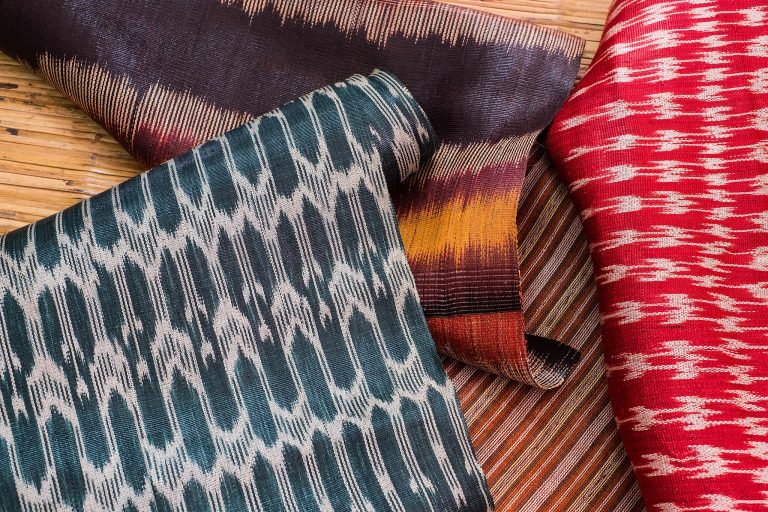As we’ve seen in the first parts of this series, natural fibers come from an amazing array of sources. From caterpillar cocoons and animal fleece to plant stalks and seed pods, the natural world provides us with the perfect material to make clothing, cordage, paper, textiles and countless other useful items. Today we will look at an unusual type of plant fiber derived from the false trunk of the abaca plant.
The abaca plant
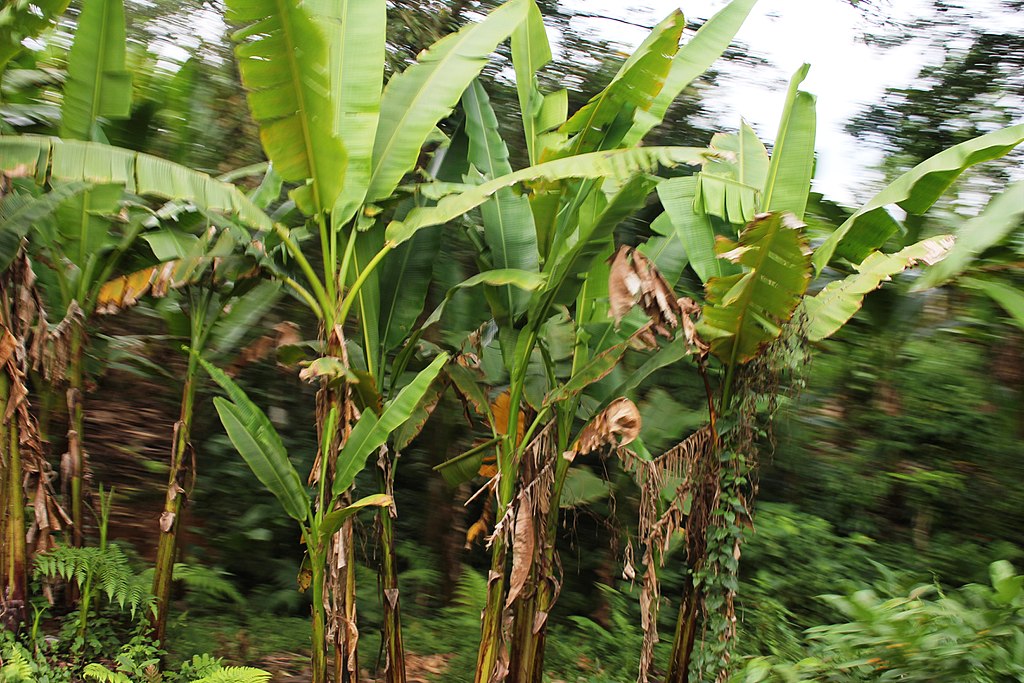
A tropical plant native to the Philippines, abaca closely resembles its relative, the banana — without the edible fruits. They both belong to the same genus (Musa), which includes about 70 species of banana-like plants with a multitude of useful applications. This herbaceous perennial (Musa textilis) is grown for the long, strong fibers found in the petiole, or stalk, of its large leaves.
Leaf fibers are known for their strength and rigidity, and are especially suited for cordage and household items. As recorded in 1521 by a Spanish priest, abaca fibers have also long been woven for fabric used in the traditional clothing of the Philippines.
Although abaca can reach over 20 feet in height, it is not a tree. The apparent “trunk” is made up of multiple layers of leaf stalks that grow from a fleshy stalk, measuring only around two inches in diameter. A false (non woody) trunk of up to 15 inches in diameter is formed by the overlapping petioles.
Plants are propagated from mature root stock, which sends up a cluster of stalks, forming a mat, or hill. When a stalk reaches maturity — which can take up to two years — a flower spike will form at the top, bearing clusters of small flowers. The resulting fruits resemble bananas, but are inedible, and the stalks are typically harvested before the fruits form.
Success
You are now signed up for our newsletter
Success
Check your email to complete sign up
Only a few stalks mature at a time, and these are harvested by cutting them close to the ground around the time of flowering. After the plant is established, three or four petiole-encased stalks can be harvested every four to six months, until the plant is finally replaced after around 10 years.
Abaca leaf fiber
The petioles, or leaf stalks, start from the base, emerging from successively higher points on the stalk — thus placing the oldest petioles on the outside. The younger, inner petioles are lighter in color and the outer petioles are darker, as is the fiber they produce. The most valuable fibers are light beige, lustrous and fine.
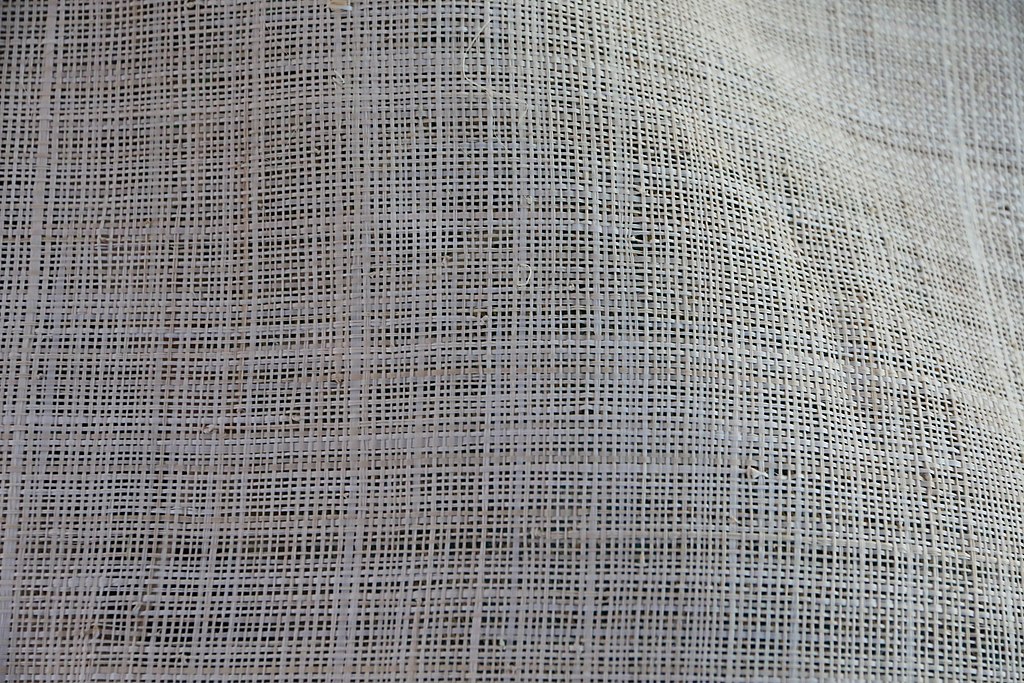
Abaca has a high (15 percent) lignin content. This natural polymer found in the plant’s cell walls gives strength and rigidity to the fiber. Abaca fiber is also exceptionally long (up to three meters) and salt-resistant. Naturally suited to maritime necessities like canvas and cordage, abaca became a major trade commodity, often under the name of “Manila hemp.”
Leaf fibers — obtained from the leaves of monocotyledonous plants — are classified as hard fibers, as opposed to the soft fibers obtained from the stems of dicotyledonous plants. Other leaf fibers include sisal and henequen, both members of the agave subfamily.
Processing abaca
Because leaf fibers are already perfectly aligned, processing is somewhat simpler than other fibers, but no less labor intensive.
Harvest

- Cleaning is the first step in preparation for harvest. The area around the plant is cleared of dead leaves, grasses and weeds to keep the plant healthy after harvest.
- Topping comes next. Using a sharp knife attached to a long pole, leaves and flowers are removed to facilitate harvest and prevent damage to surrounding plants in the next step, “tumbling.”
- Tumbling is the felling of the stalks with a large sharp knife called a bolo. The stems are cut about three inches from the ground and piled together to await the next step, “tuxying.”
- Tuxying is the process of removing the fibers from the stem. Using a specialized tuxying knife, layers of leafsheath, or splits, are pried loose at the base, and then flipped with a quick jerk to separate them from the stem. These loose strips, called tuxies, are stripped in the following process.
Extraction of fiber
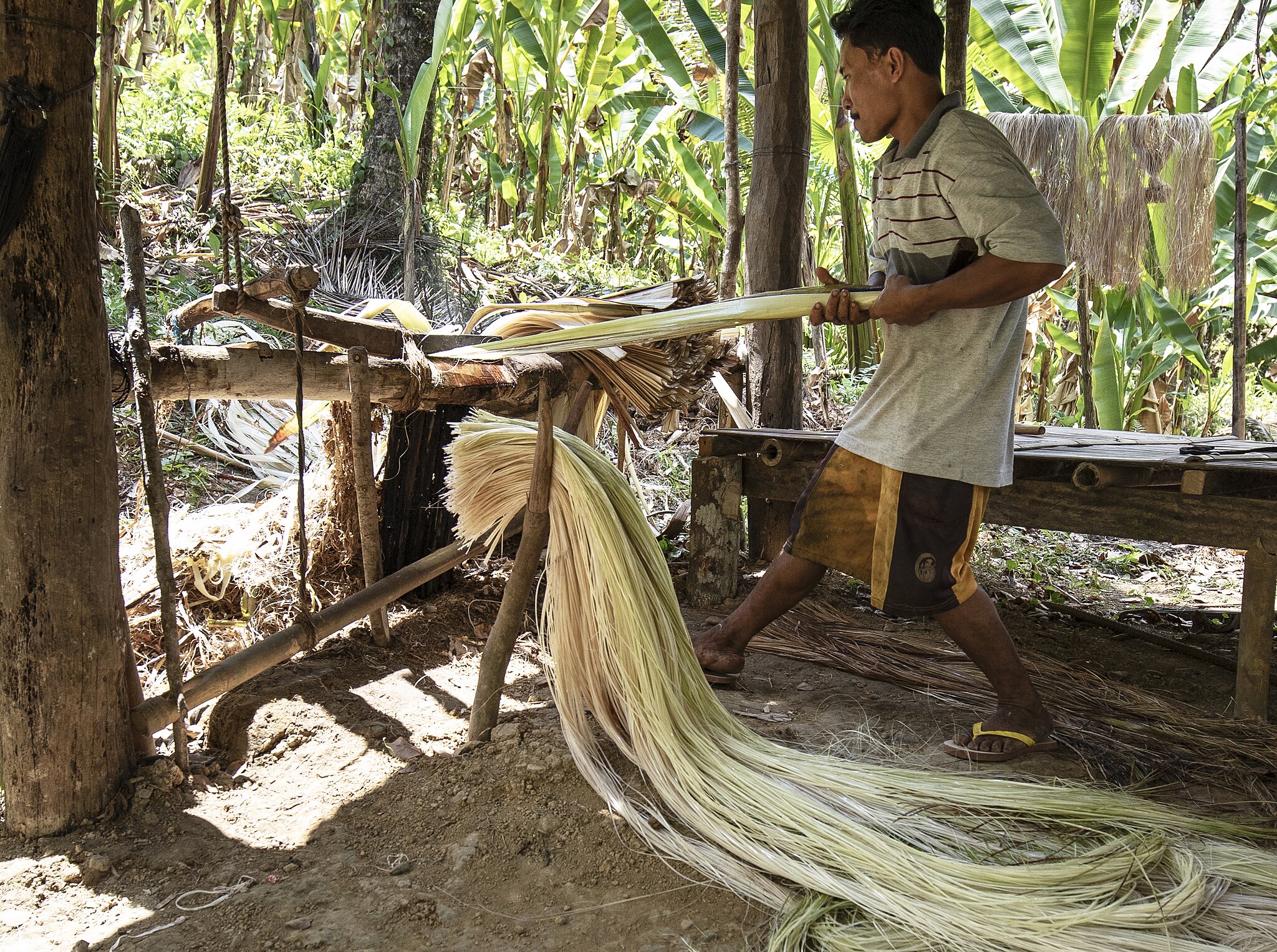
The fiber is then separated from other leaf tissues in a process called decortication. This can be done manually, or with a motorized stripping machine.
- Hand stripping is completely manual. A tuxy end is placed between a movable knife and its base, which are then clamped or tied together. With the help of a wooden pulling aid, the stripper pulls the tuxy away from the knife with much force.
- Machine stripping is considerably faster. The tuxy is wound on a tapered spindle and drawn over a knife via the spinning of an electric motor.
Drying
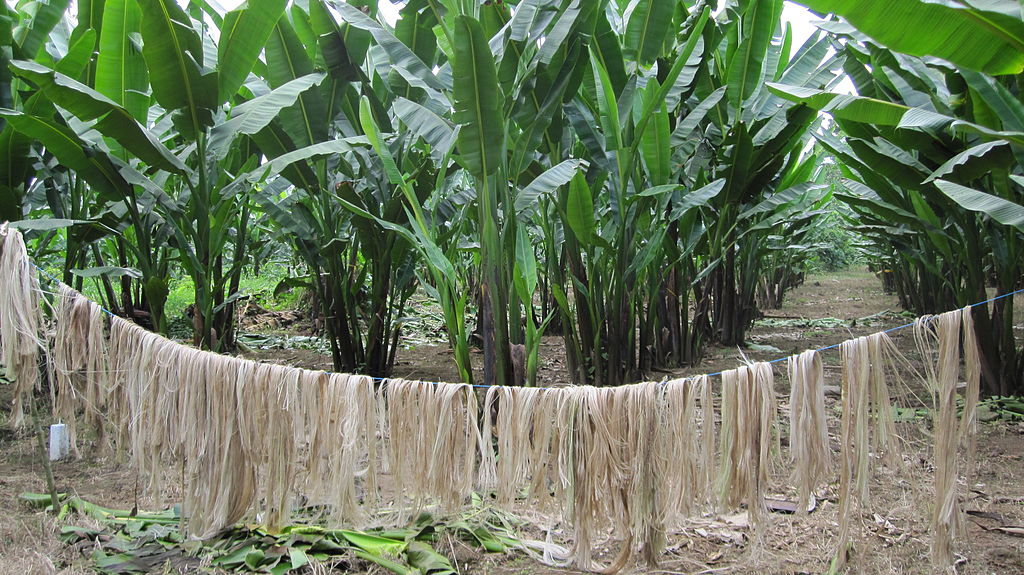
The stripped strands are brought to an open area for drying. They may be hung over wooden rods or lines for sun-drying, or air-dried in a shaded structure. Depending on the weather, drying can take hours or days. When moisture content reaches 12-14 percent, they can be bundled and stored in a well-ventilated area.
Abaca fiber applications
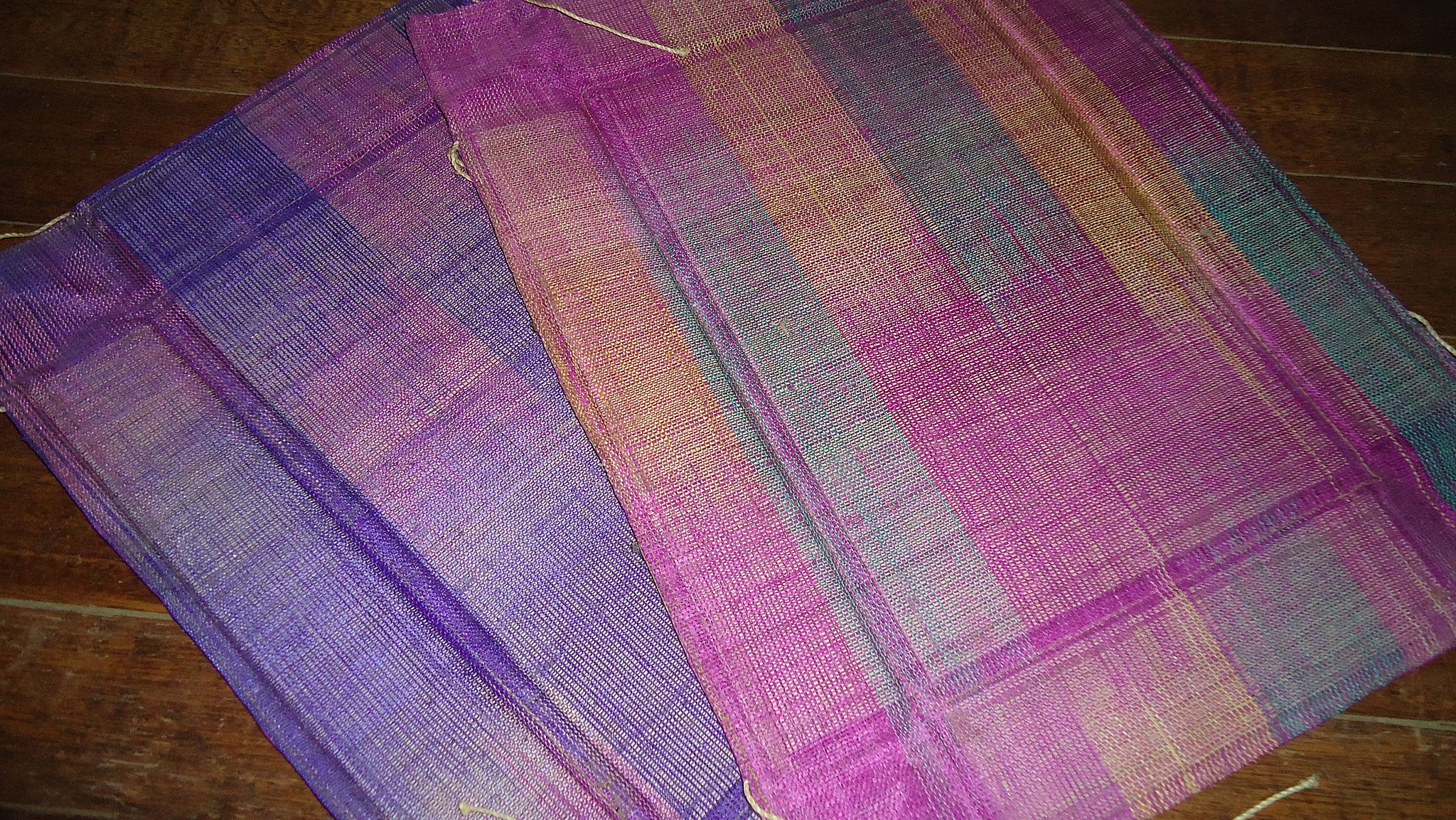
Abaca fiber is highly durable and suitable for indoor and outdoor applications. If not twisted into cordage, the processed fiber is woven into a variety of textiles or pulped for specialty papers — including sturdy manila envelopes, tea bags, and even currency!
If you find abaca-made twine, mats, luggage, carpets, upholstery, filters or geotextiles, you’ll know that they were made to last. The finest fibers can be woven into light, breathable fabric for comfortable clothing; and there is also growing interest in using lighter, more sustainable abaca fibers as a replacement for glass fibers in composite fiberglass used in automobiles and boats.




